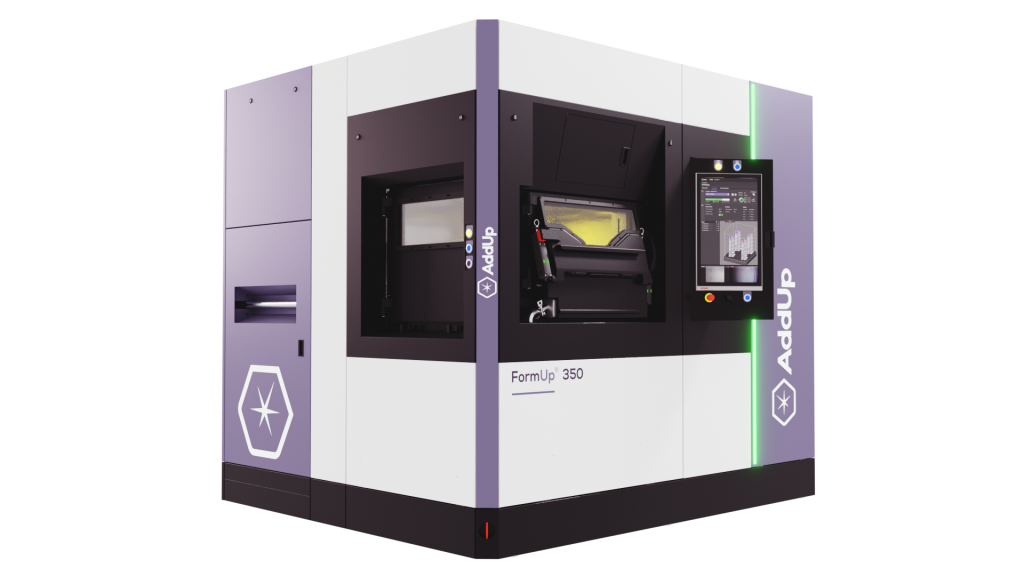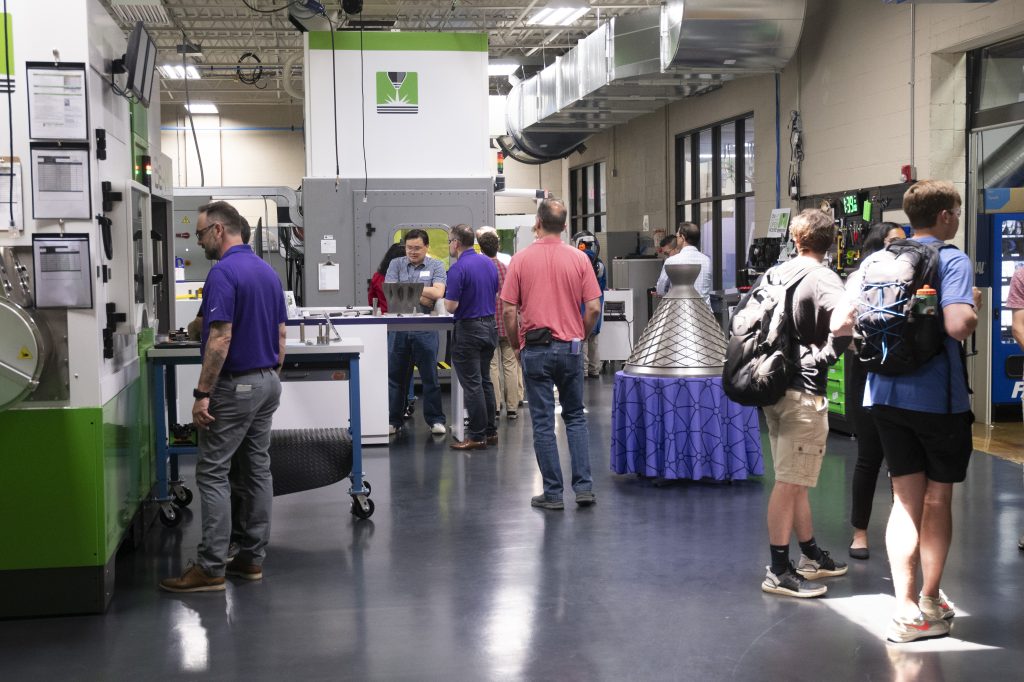French metal 3D printing specialist AddUp has introduced a new material that could be of interest to tooling manufacturers across the industry.
Though more traditionally utilized in the field of injection molding, AddUp has now launched an AISI 420 steel for the 3D printing sector. Compatible with the firm’s FormUp 350 powder bed fusion (PBF) machines, the material is said to allow for the creation of complex and efficient molds, with reduced post-processing needs.
“Unlike alloys specially designed for additive manufacturing, which require users to invest in developing suitable post-processing, we offer here a widely used grade,” explains Frédéric Sar, Materials Manager at AddUp. “With AISI 420, the post-printing operations are identical to those of parts produced by forging. Existing solutions in heat treatments, surface treatments, machining settings, and insert grades are directly applicable to printed parts.”

AddUp’s FormUp 3D printing portfolio
Formed as part of a joint venture between Michelin and Fives, AddUp is a manufacturer of PBF and Directed Energy Deposition (DED) 3D printers. On the PBF side of its offering, AddUp markets the FormUp 350 and FormUp 350 Evolution, both of which can be fitted with up to four 500W lasers, that are capable of fusing powder across the entire build area.
As well as 100% platform coverage, a feature that facilitates freedom during build preparation, the systems are said to offer faster powder distribution than their competitors. This, the firm says, is thanks to a bidirectional coating system that unlocks more rapid spreading cycles than monodirectional spreading processes allow, in a way that “reduces non-productive time by 40%.”
Other performance features of the FormUp 350 include its probe-based platform referencing system. The machines’ rapid referencing setup takes seconds to automatically adjust the positioning of manufacturing trays and check their flatness. The unit also ships with a long-life smoke treatment module, and Cross Jet technology, which prevents the soiling of laser protection glass during production.

Where the Formup 350 Evolution differs, is that it features a larger 350 x 350 x 1000 mm build volume, which in turn, gives it a print capacity of 122.5 liters, 185% more than that of the original machine. That said, both systems still benefit from AddUp’s process monitoring suite. Launched last year, the software brought users Dashboard, Recoat Monitoring, and Meltpool Monitoring functionalities.
The company also continues to build out its wider offering through cross-industry R&D and business partnerships. In March 2022, it was announced that an AddUp-built 3D printer was en-route to the ISS, where it would be used to print in-orbit.
More recently, the firm has turned its attention to aerospace, through the signing of deals with MT Aerospace and Dassault Aviation. As part of the latter initiative, AddUp is working on a process of mass-3D printing aviation parts that definitively allows additive manufacturing to progress from prototyping in the sector, into volume production.

Broadening into mold tooling
Also known as ‘1.4021’ or ‘1.2083,’ AISI 420 is often used to create molds for plastic injection molding, due to its high levels of mechanical strength and corrosion resistance. Having become one of the first in the metal 3D printing industry to launch a version of the alloy that’s 3D printing-compatible, AddUp says it’s now betting on “rapid adoption by industrialists in the tooling field.”
The company believes this will happen because of the wider range of post-treatments open to users than are traditionally compatible with 3D printing metals. In practice, AddUp says adopters will therefore be able to target properties for a specific application. For instance, using the ‘quneching’ treatments available for raw 420 steel, printed parts can achieve a tensile strength of up to 1980 MPa.
Since developing its AISI 420 material, AddUp has begun working with leading German tooling manufacturer Aachener Werkzeubau Akademie (WBA) to deploy the alloy at one of its facilities. During initial trials, the firms have successfully managed to develop molds with porosity rates of less than 0.05%, a level that guarantees their durability under high stress.
Moving forwards, AddUp is encouraging other manufacturers to get in touch and submit their potential use cases. The company has pledged to support those that do so with the redesigning of molds, the printing of parts, and research into the feasibility of producing these at scale, in anticipation of achieving further productivity and quality gains.
To stay up to date with the latest 3D printing news, don’t forget to subscribe to the 3D Printing Industry newsletter or follow us on Twitter or liking our page on Facebook.
While you’re here, why not subscribe to our Youtube channel? featuring discussion, debriefs, video shorts and webinar replays.
Are you looking for a job in the additive manufacturing industry? Visit 3D Printing Jobs for a selection of roles in the industry.
Featured image shows an injection mold 3D printed from AISI 420 steel. Image via AddUp.



